Restoration & Maintenance Corner: On Diamond Abrasives
 Most restoration and fabrication professionals take their abrasives for granted nowadays.
Most restoration and fabrication professionals take their abrasives for granted nowadays.
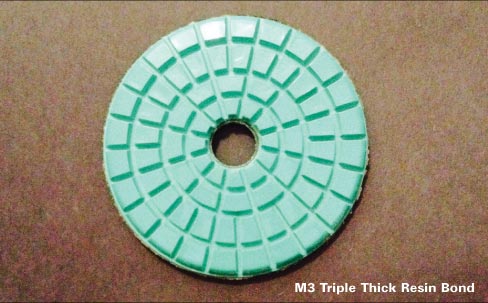 They buy the best diamond disc, puck, bit, or blade at the best price they can. However, this is a more complicated issue than meets the eye.
They buy the best diamond disc, puck, bit, or blade at the best price they can. However, this is a more complicated issue than meets the eye.
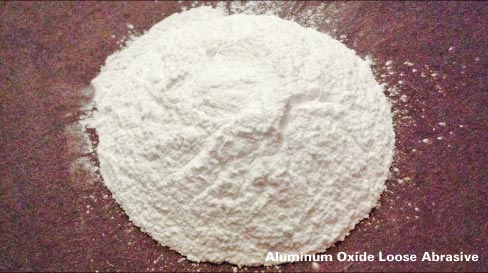 There are many types of abrasives used for the stone and similar industries. There is silicon carbide, aluminum oxide, tin oxide, and of course the advent of the industrial diamond abrasive. Obviously there are many other abrasives too. All have different properties so each abrasive has advantages and disadvantages.
There are many types of abrasives used for the stone and similar industries. There is silicon carbide, aluminum oxide, tin oxide, and of course the advent of the industrial diamond abrasive. Obviously there are many other abrasives too. All have different properties so each abrasive has advantages and disadvantages.
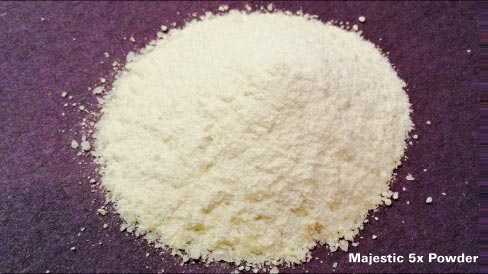 For example, silicon carbide bricks are still used today on automatic slab and tile line machines in large fabrication plants because they are inexpensive and also produce a good finish. Aluminum oxide is used in virtually most all stone polishing processes in some way. And of course, the industrial diamond has forever changed the way stone is cut, shaped, honed, and polished.
For example, silicon carbide bricks are still used today on automatic slab and tile line machines in large fabrication plants because they are inexpensive and also produce a good finish. Aluminum oxide is used in virtually most all stone polishing processes in some way. And of course, the industrial diamond has forever changed the way stone is cut, shaped, honed, and polished.
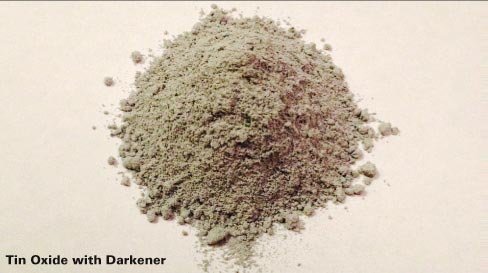 The basic abrasive is in loose grain form. This loose grain abrasive can be used as is or be mixed and “bonded” with a matrix. Polishing powders, honing powders, and compounds are loose grain abrasives. There are resin matrices, metal matrices, ceramic matrices, and synthetic cement type matrices which are among the most popular bonds used in the stone industry. Once again, each matrix or bond has advantages and disadvantages.
The basic abrasive is in loose grain form. This loose grain abrasive can be used as is or be mixed and “bonded” with a matrix. Polishing powders, honing powders, and compounds are loose grain abrasives. There are resin matrices, metal matrices, ceramic matrices, and synthetic cement type matrices which are among the most popular bonds used in the stone industry. Once again, each matrix or bond has advantages and disadvantages.
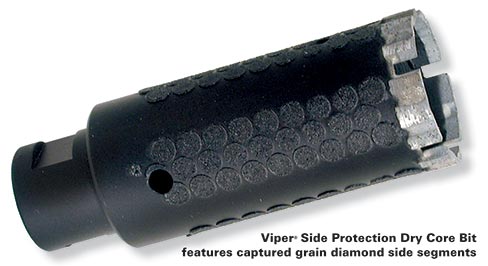 Once the loose grain abrasive has been bonded with the appropriate matrix material, it is now considered a captured grain abrasive. Industrial natural or synthetic diamonds are matched with metals like nickel, copper, or bronze for aggressive stock removal applications. Resin bonded diamonds are typically used for medium to fine stock removal applications.
Once the loose grain abrasive has been bonded with the appropriate matrix material, it is now considered a captured grain abrasive. Industrial natural or synthetic diamonds are matched with metals like nickel, copper, or bronze for aggressive stock removal applications. Resin bonded diamonds are typically used for medium to fine stock removal applications.
The abrasive grain chosen for a particular process is generally selected based on the hardness (which equates into cutting speed and life of the abrasive). Therefore, the bond or matrix must support the abrasive grain and then when the abrasive grain becomes worn or has departed, the matrix must wear at a rate that exposes fresh abrasive grain to keep the cutting process efficient and uninterrupted. Still with me?
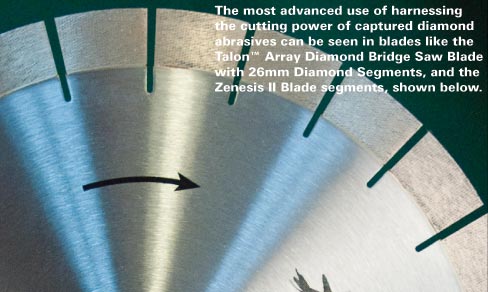 All abrasive grains wear. Silicon carbide tends to round while it becomes smaller. Industrial diamonds are friable or simply stated, fracture while becoming smaller or departing altogether.
All abrasive grains wear. Silicon carbide tends to round while it becomes smaller. Industrial diamonds are friable or simply stated, fracture while becoming smaller or departing altogether.
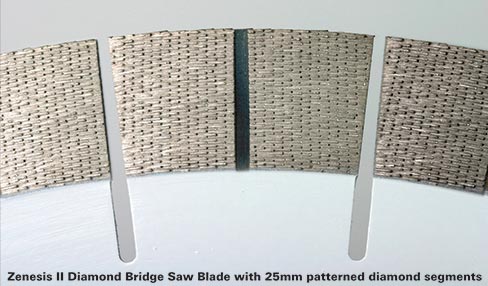 So the trick is to get the right abrasive with the right matrix for the right application. Resin would typically not be used as the matrix in a diamond cutting blade as metal would typically not be used as a matrix for a fine honing or polishing process.
So the trick is to get the right abrasive with the right matrix for the right application. Resin would typically not be used as the matrix in a diamond cutting blade as metal would typically not be used as a matrix for a fine honing or polishing process.
Hard surfaces typically require a soft matrix or bond while soft surfaces typically would require a harder matrix. Soft materials such as limestone or some of the softer concretes are themselves abrasive and will wear our cutting abrasives at a much greater rate than harder materials like granite. This is a hard concept for some to grasp.
Loose grained abrasives like aluminum oxide and tin oxide are typically used in the polishing process of both marbles and granites. They must be replaced or added to as they wear or they will cease producing the same effect. Restoration professionals can tend to overwork their polishing powders and compounds and then wonder why they don’t seem to be working as well.
As a boy in the late 1960s, I remember walking around the Candoro Marble Company mill where my Grandpa worked. There was a large shaft that ran down the overhead of the massive main building. Many gang saws were run off this one main shaft. Large metal blades would swing back and forth slowly cutting a giant quarried block of Tennessee Marble into slabs. The large metal blades had sand pumped into the cutting action which was used as the abrasive. This process would take days. Today, large diamond blades cut blocks into slabs in hours.
Marble and granite tiles have only been around for the last 40 years or so. Cutting or veneering these tiles was not feasible before the diamond blade became prevalent in the industry. The thinnest materials were at least 5/8’’ of an inch thick back then. These new tiles have made stone a building product affordable by all in today’s market.
I have manufactured, sold, and used abrasives for many years. I actually worked making Frankfurt and various other series of synthetic bricks and resin bonded diamonds. I have traveled the world to various abrasive manufacturing plants, quarrying locations, and both small and large fabrication plants. Of course I have also worked with abrasives on many thousands of square feet of marble, granite, limestone, terrazzo, and concrete projects. Our industry depends on abrasives.
I am still learning about abrasives. What I have learned is there is no one abrasive product that works in all situations. You must be somewhat knowledgeable about abrasives but above all, lean on your supplier for both technical support and innovation. They should be able to assist you in choosing the right abrasive for a particular project.
Bob Murrell has worked as a supplier of products and technical support to the natural stone industry for over 35 years. He has written numerous articles for various trade publications and has also trained thousands of contractors over the last 25 years.